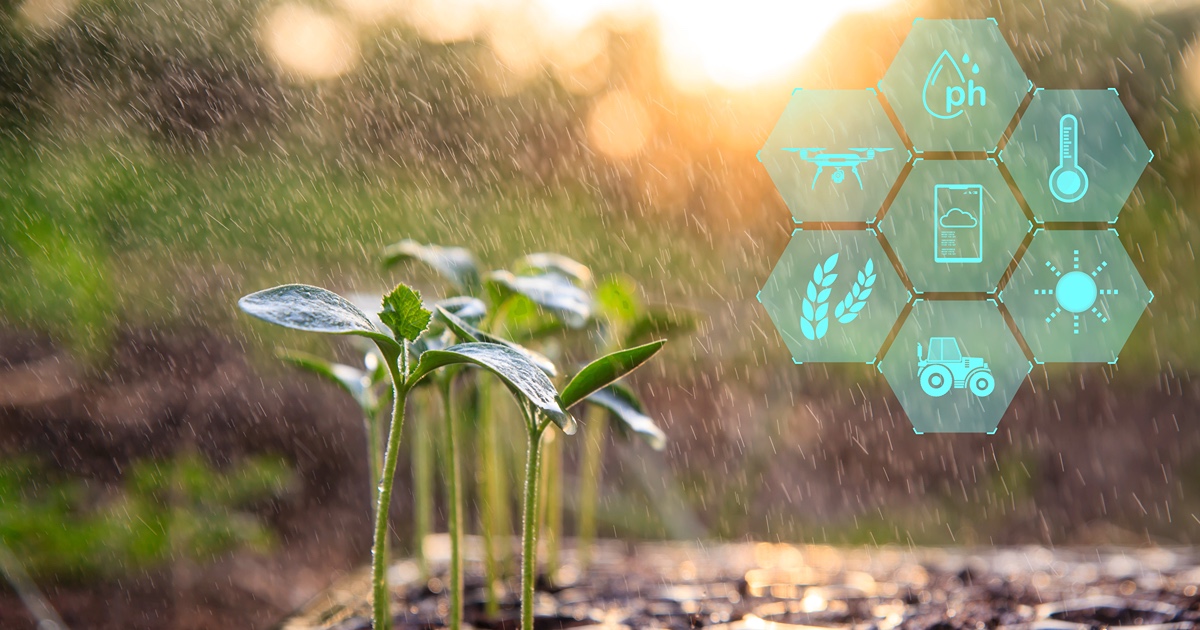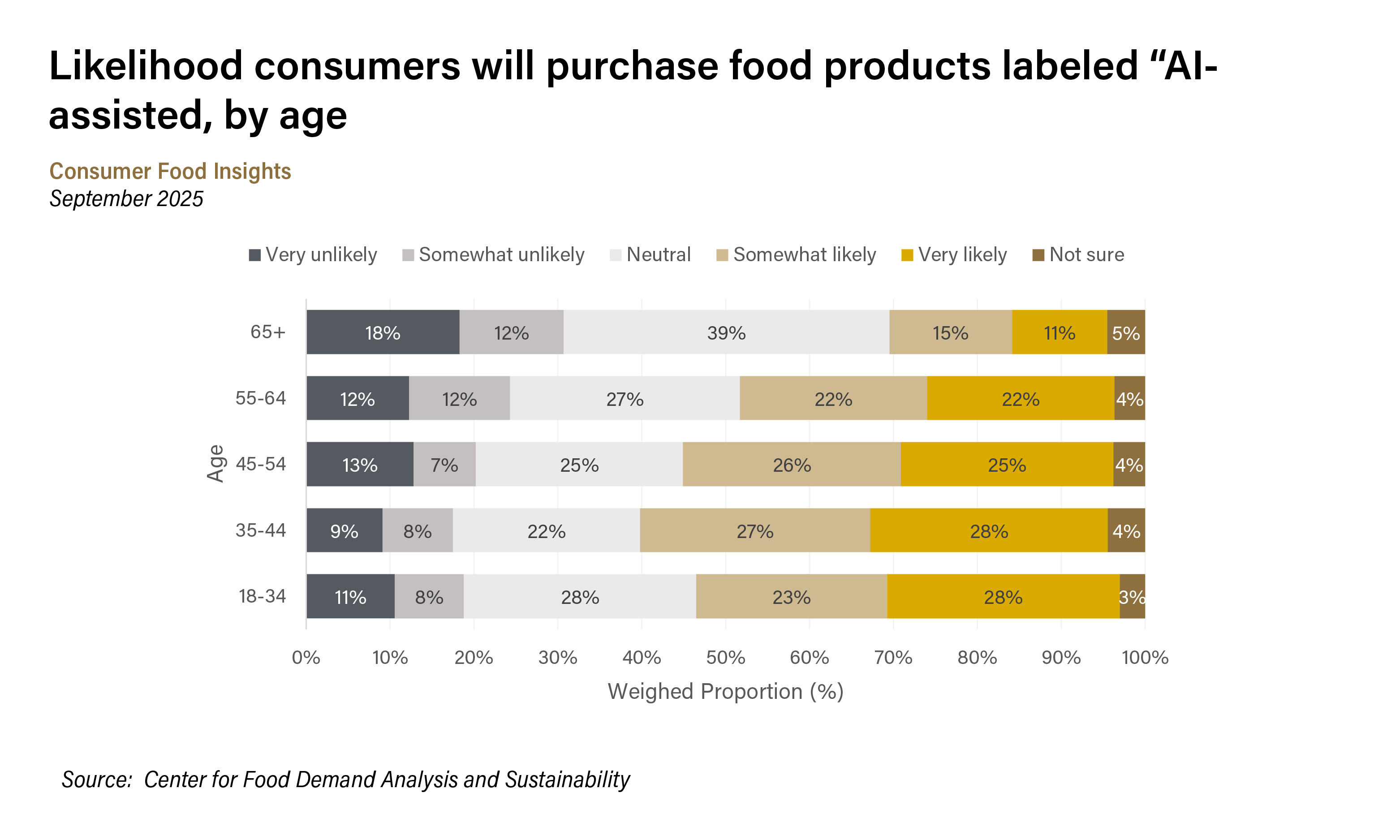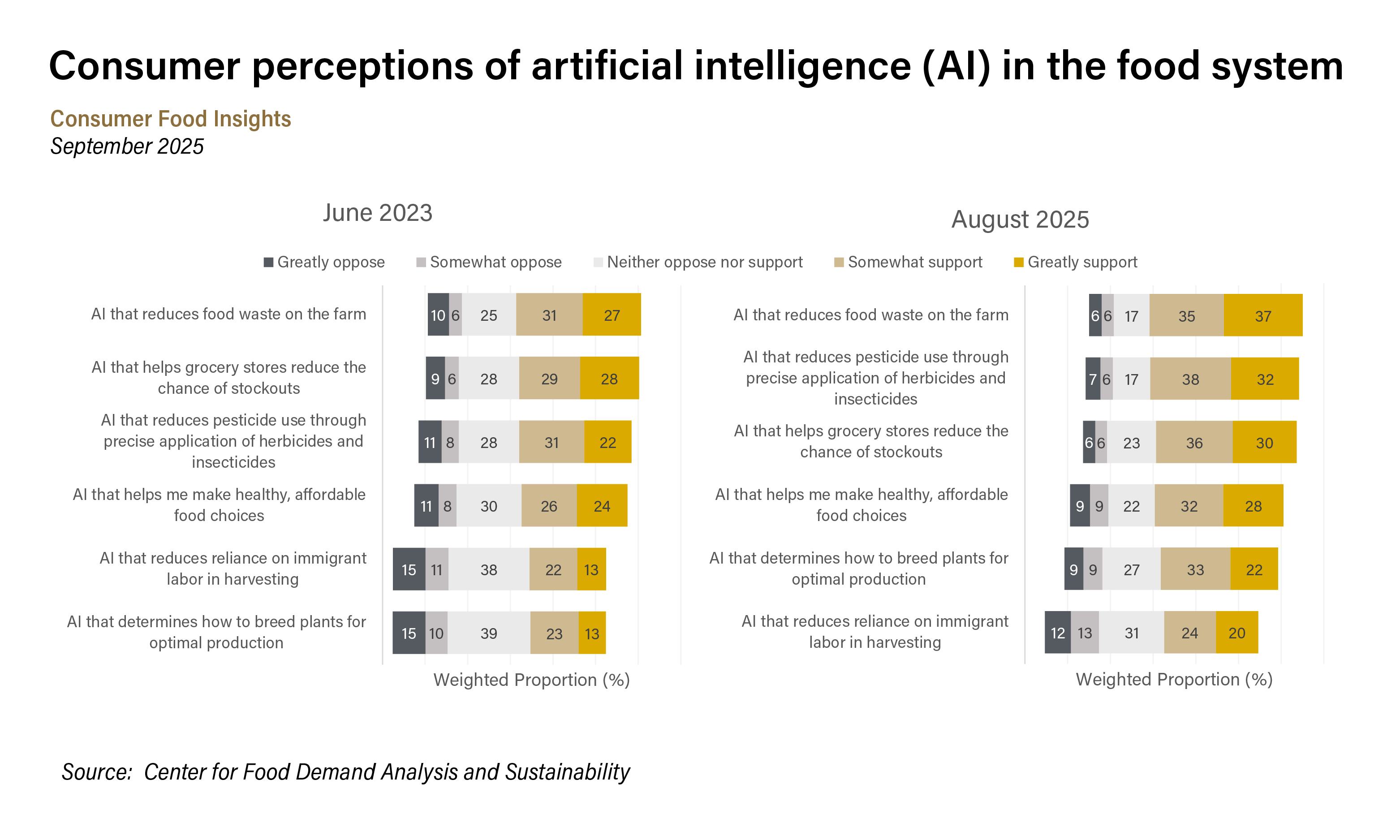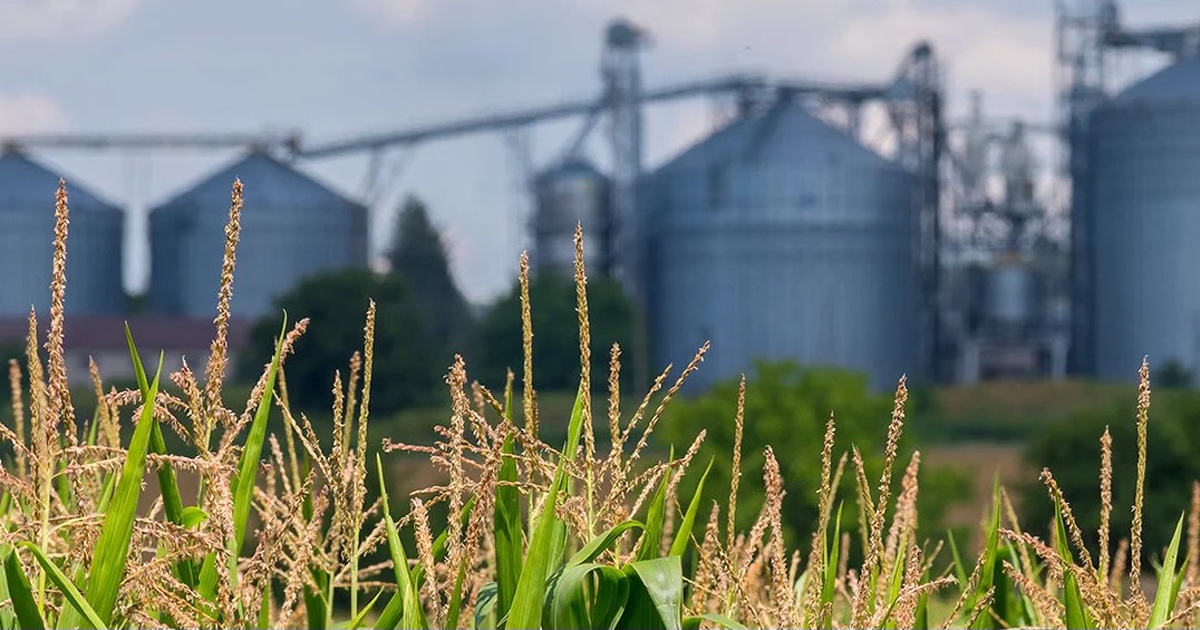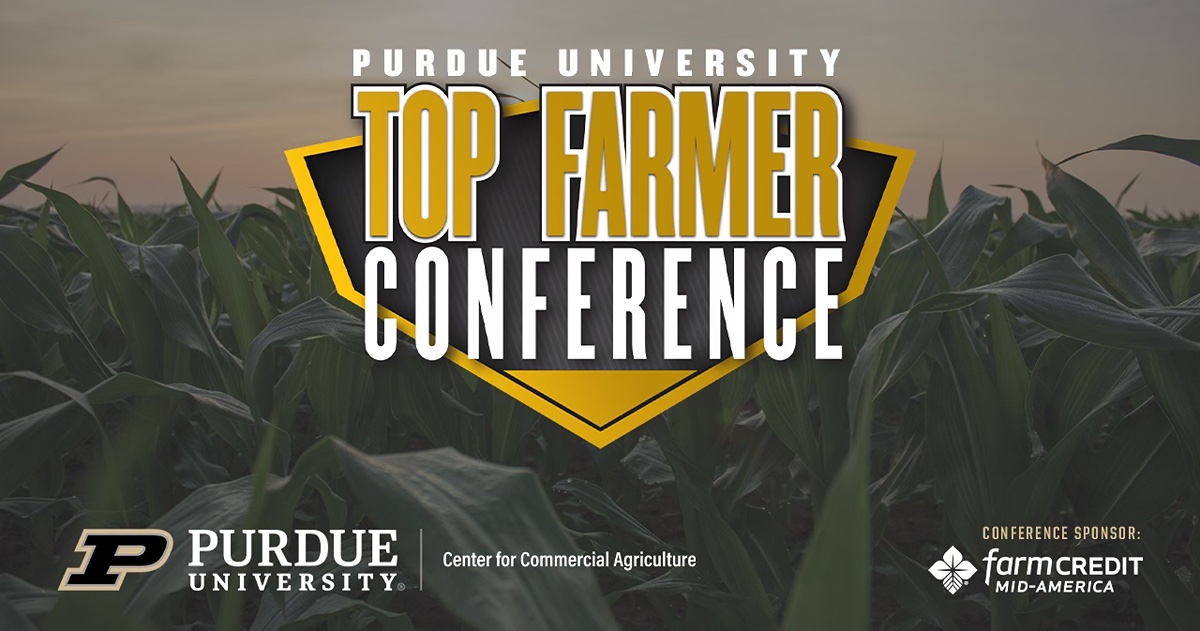Consumers mostly support AI tools to improve food and agriculture
WEST LAFAYETTE, Ind. — Consumers generally support using artificial intelligence to improve food and agricultural production, according to the August Consumer Food Insights Report (CFI).
The survey-based report from Purdue University’s Center for Food Demand Analysis and Sustainability (CFDAS) assesses food spending, consumer satisfaction and values, support of agricultural and food policies, and trust in information sources. Purdue experts conducted and evaluated the survey, which included 1,200 consumers across the U.S.
The CFI first addressed AI in food and agriculture in June 2023. At that time, ChatGPT was a relatively new tool. Since then, consumers have become more familiar with AI; many use it weekly or even daily. From June 2023 to August 2025, consumers were asked about their support, neutrality or opposition to six applications of AI to food and agriculture, such as reducing food waste on farms by determining how to breed plants for optimal production.
“Many consumers trust AI to make decisions in food production, but they emphasize the importance of transparency about its use in the production process,” said the report’s lead author, Joseph Balagtas, professor of agricultural economics at Purdue and director of CFDAS. Almost two-thirds say it is either “very” or “extremely” important for food producers to disclose when AI is used in the production or decision-making process.
“The likelihood that consumers say they would select a food item labeled ‘AI assisted’ is mixed across consumers,” he said. “Consumers cite trust in AI as a big factor in whether they’d choose a food product labeled ‘AI assisted.’”
Most consumers (70%) who said they would be “unlikely” to choose an AI-assisted product over a conventionally produced alternative cited trust in its ability to maintain food safety as a concern. Conversely, 53% of those who selected “likely” believe AI can improve food safety.
“This contrast shows the wide range of perspectives in this new age of technology. What’s clear is that trust and understanding play a major role,” Balagtas said. “Many consumers still aren’t sure what ‘AI assisted’ really means in the context of food production. For food producers and brands, this presents both a challenge and an opportunity: Building trust through transparency and education will be key. Helping consumers understand how AI is used, from optimizing harvests to improving freshness or developing recipes, could make a big difference in acceptance and adoption.”
Food values remain consistent with those of previous months in the survey. Taste, affordability, nutrition and availability take priority over environmental impact and social responsibility.
“This disparity in what consumers value when choosing food at the grocery store is even greater among older consumers,” said Elijah Bryant, a survey research analyst at CFDAS and a report co-author. The importance of the environmental impact and social responsibility of one’s food shrinks with age, he noted.
The report’s authors broke down their results in six age groups: 18-34, 35-44, 45-54 and 65-plus. Environmental and social factors, while more valued by younger consumers, remain secondary overall.
The average diet quality score among American adults was 62.2, placing more in the “intermediate” category. “While older adults tend to score higher, all age groups show room for improvement,” Bryant said. “Only 17% of respondents were classified as having a ‘healthy’ diet.”
Food security remains a concern but within the survey’s historical variation, with 13.5% of households reporting challenges in accessing enough food. The issue is most pronounced among younger adults (18-34), with a reported rate of 24.1% compared to just 3% among those 65 and older.
In August, consumers reported spending an average of $127 a week on groceries and $70 a week dining out. Spending tends to be higher among younger and middle-aged adults, likely due to larger household sizes and children at home.
Consumers expect food prices to rise by 4.5% over the next year, marking the third consecutive monthly increase and a 0.5-percentage point jump from July. “This growing expectation stands in contrast to the actual inflation rate, which has remained relatively stable around 2.9% after increasing gradually over the past few months, according to the consumer price index,” Bryant said. “The gap between perception and reality suggests that consumers may be responding to persistent economic uncertainty and sentiment about the cost of food.”
Bryant noted some differences and similarities here between consumers of different ages. Younger consumers tend to choose foods marketed as sustainable or more ethical than older consumers. However, older consumers are less likely to take risks with the foods they eat. “Overall, label-checking behavior is similar across all consumers for information such as nutrition and dates,” he said.
Aligned with the findings in the consumer behaviors section, younger consumers are more likely to believe in the health advantages of eating alternative options such as organic, plant-based and gluten-free food in place of their conventional counterparts. As age increases, skepticism about these health statements grows. Many consumers from all age groups believe in the connection between agriculture and the environment.
Finally, trust in different organizations as sources of information for healthy and sustainable food is more varied and lower among younger consumers. Older adults consistently show more stable and higher levels of trust in institutional information sources. Young adults, by contrast, exhibit a wider range of trust for various information sources.
The Center for Food Demand Analysis and Sustainability is part of Purdue’s Next Moves in Plant Sciences 2.0 and uses innovative data analysis shared through user-friendly platforms to improve the food system. In addition to the Consumer Food Insights Report, the center offers a portfolio of online dashboards.
About Purdue Agriculture
Purdue University’s College of Agriculture is one of the world’s leading colleges of agricultural, food, life and natural resource sciences. The college is committed to preparing students to make a difference in whatever careers they pursue; stretching the frontiers of science to discover solutions to some of our most pressing global, regional and local challenges; and, through Purdue Extension and other engagement programs, educating the people of Indiana, the nation and the world to improve their lives and livelihoods. To learn more about Purdue Agriculture, visit this site.
About Purdue University
Purdue University is a public research university leading with excellence at scale. Ranked among top 10 public universities in the United States, Purdue discovers, disseminates and deploys knowledge with a quality and at a scale second to none. More than 106,000 students study at Purdue across multiple campuses, locations and modalities, including more than 57,000 at our main campus locations in West Lafayette and Indianapolis. Committed to affordability and accessibility, Purdue’s main campus has frozen tuition 14 years in a row. See how Purdue never stops in the persistent pursuit of the next giant leap — including its integrated, comprehensive Indianapolis urban expansion; the Mitch Daniels School of Business; Purdue Computes; and the One Health initiative — at https://www.purdue.edu/president/strategic-initiatives.
Writer: Steve Koppes
Media contact: Devyn Ashlea Raver, draver@purdue.edu
Sources: Joseph Balagtas, balagtas@purdue.edu; Elijah Bryant, ehbryant@purdue.edu
Agricultural Communications: Maureen Manier, mmanier@purdue.edu, 765-494-8415
Journalist Assets: Publication quality charts and images image can be obtained at this, link

